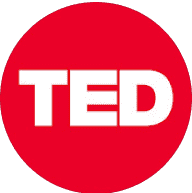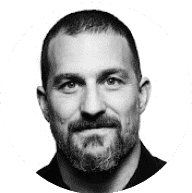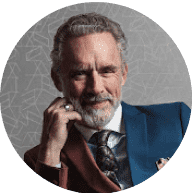James Simons (full length interview) - Numberphile
Numberphile2・4 minutes read
The speaker's journey from childhood fascination with math to becoming a renowned mathematician focused on differential geometry, developing key concepts later applied in physics like string theory. Transitioning to financial modeling after government work, the founder emphasizes collaborative efforts, model-driven decisions, and a focus on scientific research in their philanthropic endeavors.
Insights
- The speaker's journey from a childhood fascination with mathematics to specializing in differential geometry highlights a lifelong dedication to the subject, culminating in groundbreaking work with Chern-Simons invariants and applications in physics.
- Transitioning from mathematics to money management, the speaker's success in building a model-driven firm underscores the importance of collaboration, infrastructure, and risk-taking, with a focus on mathematical modeling, machine learning, and minimizing volatility to achieve profits and maintain secrecy through non-disclosure agreements.
Get key ideas from YouTube videos. It’s free
Recent questions
What is differential geometry?
The study of curved spaces and manifolds.
What are Chern-Simons invariants?
Mathematical tools with applications in physics.
What is the importance of understanding trading costs?
Minimizing expenses and managing positions effectively.
What is the role of luck in success?
Acknowledged as a contributing factor alongside skills.
How does the founder approach philanthropy?
Supporting basic science research without specific outcomes.
Related videos
Summary
00:00
Mathematician's Journey: From Childhood Curiosity to Innovations
- Mathematics came naturally to the speaker as a child, with a fascination for counting and multiplication by two.
- Discovered Zeno's paradox at a young age, leading to profound thoughts about infinite division and the concept of never running out of gas.
- Despite being smart, the speaker was sometimes careless in school, particularly with arithmetic tests, but excelled in math and enjoyed learning formulas.
- Specialized in mathematics early on, skipping the first year at MIT and taking a graduate course in abstract algebra that clarified many concepts.
- Always aspired to be a mathematician, focusing solely on mathematics as the subject of interest.
- Differential geometry became the speaker's area of specialization, delving into the study of curved spaces and manifolds.
- Found inspiration in Stokes' theorem, a generalization of the fundamental theorem of calculus, which led to a deep appreciation for differential geometry.
- Joined Stony Brook University as the math department chair, delving into characteristic classes in topology and attempting to solve a long-standing problem.
- Collaborated with mathematician Chern on defining invariants of manifolds, leading to significant results presented at an international congress.
- Developed differential characters and Chern-Simons invariants, later finding applications in various fields of physics, including string theory and condensed matter theory.
17:27
Mathematician turned money manager revolutionizes predictive models.
- The speaker discusses their work in differential cohomology and the satisfaction of seeing their work used by others.
- They spent four years at a secretive government agency working on code cracking during their mathematics career.
- While at the agency, they learned about computers, algorithms, and the excitement of potentially cracking codes.
- The speaker was fired from the agency during the Vietnam War for publicly expressing opposition to the conflict.
- Following their dismissal, they transitioned to the money management business using some family funds and eventually building successful models to predict market trends.
- The speaker's models in the money management business were based on anomalies in price data and gradually replaced fundamental analysis.
- The prediction models in the money management business are complex but rely on machine learning, statistics, and probability theory.
- The speaker emphasizes the importance of understanding trading costs and minimizing volatility in managing positions.
- The money management firm employs around 100 PhDs and focuses on hiring smart individuals with backgrounds in physics, astronomy, mathematics, or statistics.
- The speaker's approach to building the firm involved creating a collaborative environment, providing top-notch infrastructure, and making all employees partners in the company.
34:27
"Founder's Success: Math, Collaboration, Philanthropy, Risk"
- Monthly board meetings are characterized by good morale and collaboration, with profits shared among participants.
- The firm's success is attributed to a collaborative effort, with a focus on mathematical modeling and computer expertise.
- The firm's infrastructure includes extensive data sets and programs for hypothesis testing, creating a high barrier to entry.
- Secrecy is maintained through non-disclosure agreements to protect intellectual property, as patents or copyrights are not viable options.
- The firm's success is primarily due to being 100% model-driven, with decisions based solely on the model's recommendations.
- The founder emphasizes the importance of luck in success and acknowledges the role of managerial skills over mathematical genius.
- The founder's pride lies in both his mathematical contributions and business achievements, with a current focus on a foundation supporting scientific research.
- The foundation primarily supports basic science research in various fields, with a focus on investigator grants and collaborative projects.
- The foundation's approach to philanthropy contrasts with the founder's business strategy, as it involves supporting research without specific outcomes in mind.
- The founder's risk-taking nature is evident in both his business ventures and philanthropic efforts, with a current concern for the state of mathematics education in the country.
51:09
"Respect and Recognition Drive Job Satisfaction"
- Financial reward and respect are key motivators for workers, such as Supreme Court justices who value respect over fortune.
- To retain high school math teachers, offering a $15,000 salary increase and fostering a community of math and science teachers can enhance their importance and job satisfaction.
- In Finland, teachers have high societal status, leading to low turnover rates, unlike in the United States where teachers lack societal recognition and appreciation.
- The focus on measuring teachers' performance based on standardized tests in the US is criticized as ineffective and detrimental to morale, suggesting that respect and recognition are more beneficial.
- The decline in federal funding for basic research in the US has led to a reliance on philanthropy to support scientific endeavors, with personal interest and enjoyment being significant motivators for funding.




